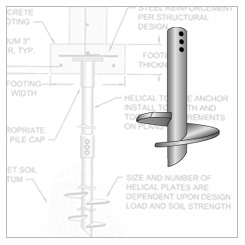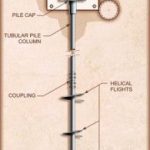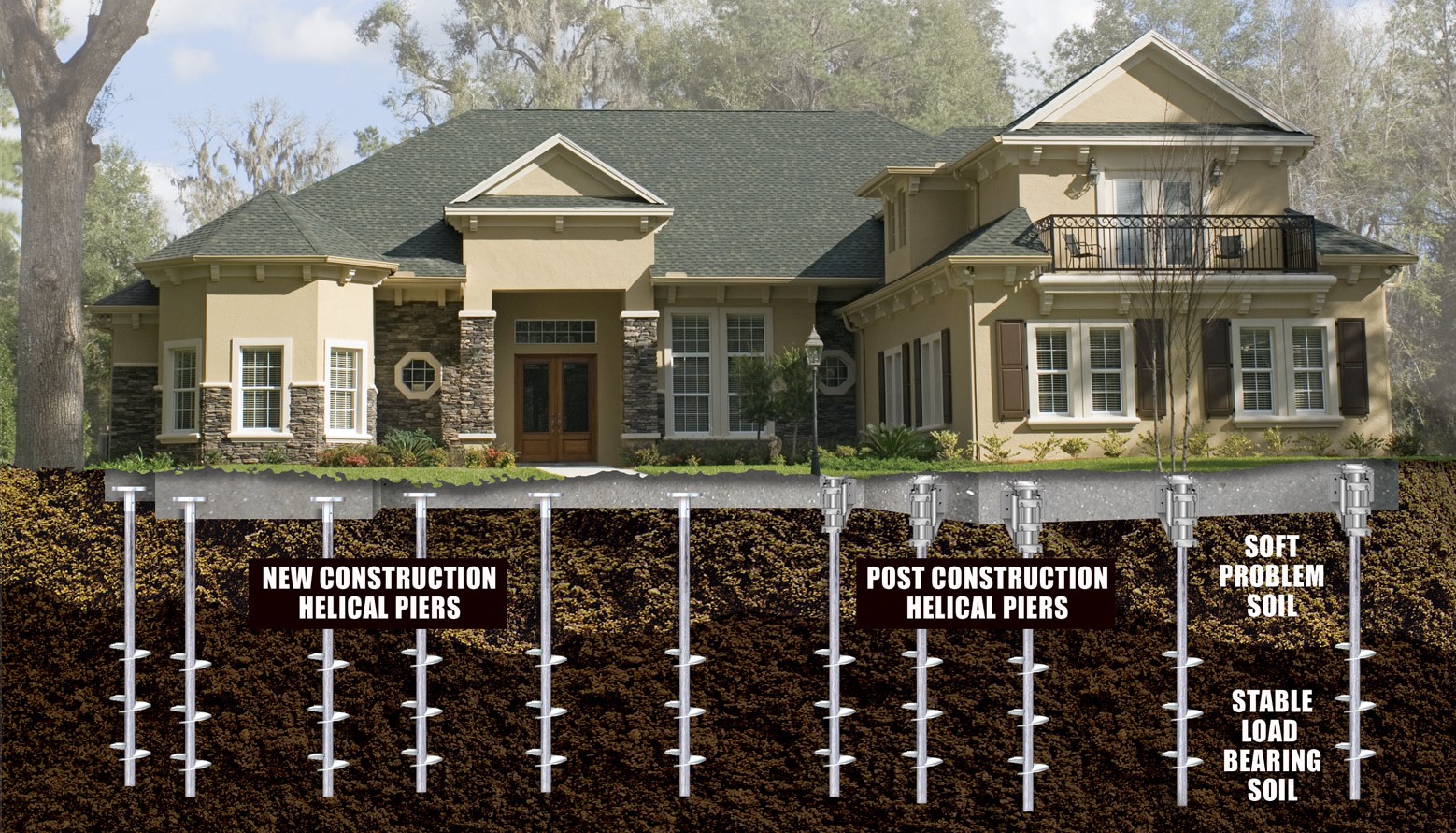Price Match Guarantee on any type of Piers!
Helical Piers
Foundation Masters believes that quality workmanship does not have to break the bank. In fact, we go to great lengths to offer our customers the best services and the highest quality products at the most competitive pricing. However, we know that comparing price quotes between companies can be very confusing. That is why we offer our Price Match Guarantee. We will match the following competitor’s price on the same project and include FREE engineering. Keep in mind, most companies are salesman based. We need to make sure that their proposed scope of work was properly diagnosed for your project, considering structural damage and site conditions, and not based off just making a sale.
Helical Piles
Below is a list of our approved competitors!
For more information, please visit Price Match Guarantee.
What are Helical Piers
 Foundation Masters is the largest distributor in helical Piers and Helical Piles along with all the hardware and equipment like drive-heads to install piers. Please feel free to call with any questions or send us your drawings or quote over for a free materials take off list and price. Also Foundation Masters, LLC price match guarantee program provides FREE ENGINEERING with all contracts!!!!!! Click HERE
Foundation Masters is the largest distributor in helical Piers and Helical Piles along with all the hardware and equipment like drive-heads to install piers. Please feel free to call with any questions or send us your drawings or quote over for a free materials take off list and price. Also Foundation Masters, LLC price match guarantee program provides FREE ENGINEERING with all contracts!!!!!! Click HERE
A helical pier is a long, round steel shaft pipe with a single or multiple helix designed to be hydraulically driven into the earth to a desired depth determined by an engineer. A helical pier’s design is characterized by a single, double, or even triple flite (refer to image on the right) is driven into the soil using hydraulic torque to depths that can only be determined by a soil boring. Helical piers are used to support the structures load-bearing members where soil conditions are poor, making it difficult to set up for a traditional spread-footer foundation system. Helical piers are used in new construction and repairing existing foundations that have problems with settlement or heaving (uplift from expansive clays). Helical piers are a good option for foundation systems where weak soils are present. These piers cause little disturbance to the soil and neighboring structures, and the loads of the structure are transferred to load-bearing soils deep in the earth.
When to Use Helical Piers
 Helical piers are used for both residential and commercial applications. These piles are often referred to as caissons, mini piles or driven piles. Helical piers are commonly used when there is structural damage or when the structure has been built in unstable soil conditions and is experiencing differential settlement damage. You can identify foundation damage by the following signs:
Helical piers are used for both residential and commercial applications. These piles are often referred to as caissons, mini piles or driven piles. Helical piers are commonly used when there is structural damage or when the structure has been built in unstable soil conditions and is experiencing differential settlement damage. You can identify foundation damage by the following signs:
Types of Helical Piers
There are two types of helical piers and/or helical tye backs, round shafts and square shafts
Round shaft helical piers can handle vertical loads when high compression is suspected. Conventional designs include:
Foundation Masters, LLC round-shaft helical foundation piers feature a steel tube shaft with a hollow circular pipe section. Round-shaft helical piers have a higher section modulus and can handle vertical loads when high compression is suspected, as well as a higher bending capacity. These foundation piers are most often applied in new construction along with foundation repair dealing with lighter loads as residential construction.
Foundation Masters, LLC square-shaft helical tye backs feature a high-strength solid steel shaft that delivers a higher capacity-to-torque ratio. We’ve also found that they’re often easier to couple onto and install.
Because they’re not an efficient guard against buckling and have little to no lateral capacity, square-shaft helical tye backs should only be used in tye back situations such as retaining walls and other earth retention systems. Square shafts are suitable for areas where tension forces are suspected, and have a greater yield and tensile strength.
How Helical Piers Work
The helical piers are hydraulically driven into the soil using a high torque until the predetermined torque is achieved for pile load capacity. They are spaced at pre-determined intervals to support the loads of the structure. When used for foundation repairs, brackets are attached to the base of the walls to transfer the weight to the piering system. The piers are installed at different depths to achieve the required torque specified by the engineer. When used for foundation repair, loads should never exceed 15 ton per pier. In new construction where the pier is positioned directly below the footer, loads can increase to over 300 tons.Helical piers are made of galvanized steel or unprotected steel. Rusting can only take place if oxygen is present, and they are generally estimated to last over a hundred years. However, this might be shorter or longer depending on the soil conditions.
Foundation Problem? Call Foundation Masters
Foundation Masters sells every type of foundation system on the market. If you have a set of plans, please send them over and we will send you a materials cost. If your looking for another estimate on your foundation repair project, we would love an opportunity to earn your business.

